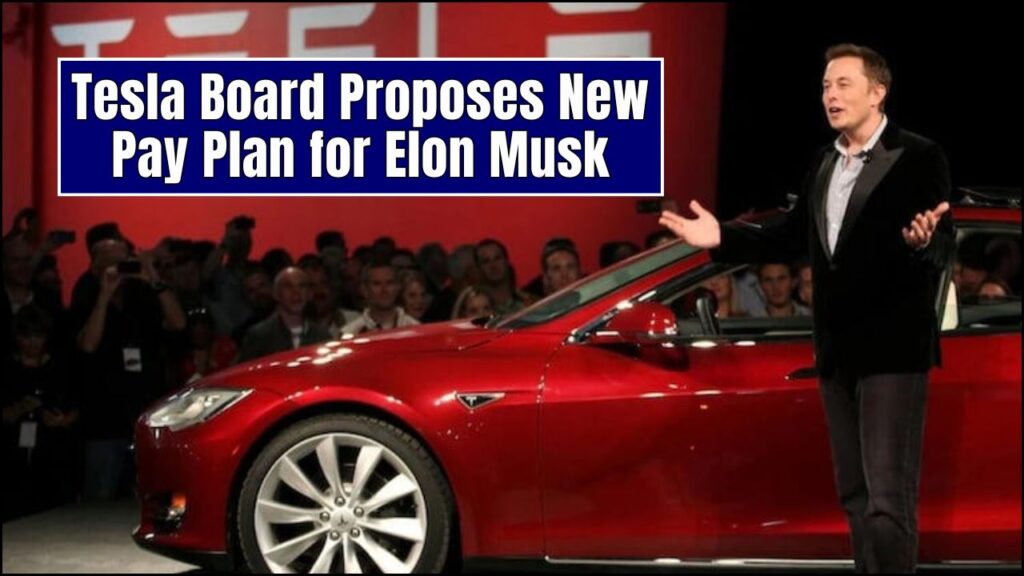
Tesla Inc. has unveiled a proposed compensation package for Chief Executive Officer Elon Musk that could make him the world’s first trillionaire. The plan, announced Friday, is valued at up to $1 trillion in stock and hinges on Tesla meeting a series of unprecedented performance milestones by 2035.
Inside Tesla’s New Pay Plan
The proposed package would grant Musk an additional 12 percent stake in Tesla, distributed in 12 performance-based tranches. Each tranche will be unlocked only if Tesla achieves specified market, operational, and technological targets.
Key milestones include:
- Increasing Tesla’s market capitalisation from about $1.1 trillion to $8.5 trillion.
- Producing 20 million electric vehicles annually, compared to about 1.8 million in 2023.
- Reaching 10 million Full Self-Driving (FSD) software subscriptions.
- Deploying 1 million robotaxis and 1 million humanoid robots (Optimus).
- Generating $400 billion in annual adjusted earnings (EBITDA).
According to Financial Times, these targets would position Tesla’s valuation above the combined market worth of current technology leaders such as Apple, Microsoft, and Nvidia.
Conditions Attached to Musk’s Potential Trillionaire Status
The pay plan stipulates that Musk must remain with Tesla for at least 7.5 to 10 years. Shareholders will also require him to commit to a long-term succession plan, especially for the later tranches of the agreement.
Additionally, the board has signalled expectations for Musk to scale back political activities and focus on Tesla’s corporate growth. “This is designed to ensure Tesla’s leadership remains aligned with the company’s extraordinary ambitions,” the company stated in its filing.
Shareholder Approval and Market Reaction
Tesla shareholders are scheduled to vote on the package at the company’s annual meeting on 6 November 2025 in Texas. Approval will require a majority of investor support.
The package echoes Musk’s earlier 2018 pay deal, which was valued at around $55 billion and drew both acclaim and criticism. While Musk achieved many of those goals, the structure faced legal challenges in the United States over corporate governance and executive compensation.
Expert Analysis and Broader Context
Analysts say the targets reflect Tesla’s vision of transforming beyond a carmaker into a technology and robotics leader. Yet they also caution that the milestones are “extraordinarily ambitious,” given current global market conditions, slowing electric vehicle sales, and increased competition.
“Tesla is effectively betting its future on mass adoption of autonomous driving and robotics,” said Professor Rajiv Menon, an economist at the Indian Institute of Management. “If realised, these targets would reshape the global automotive and technology sectors. But the risks are equally immense.”
The Associated Press noted that Tesla is already grappling with declining profits and softer demand in Europe, factors that could make such goals difficult to achieve.
What This Means for Executive Pay
If approved, the proposal would be among the largest compensation packages in corporate history. It highlights the growing debate about executive pay, corporate governance, and shareholder accountability.
Critics argue that such outsized packages can distort priorities, while supporters contend they align incentives with long-term growth. As Reuters reported, the case will be closely watched as a potential model for other firms seeking to tie leadership compensation to breakthrough innovation.
Conclusion
Tesla’s new pay plan for Elon Musk underscores the company’s extraordinary ambitions in electric vehicles, robotics, and artificial intelligence. Whether the targets are achievable remains uncertain, but the outcome of the shareholder vote will have significant implications for corporate governance and executive compensation worldwide.
















